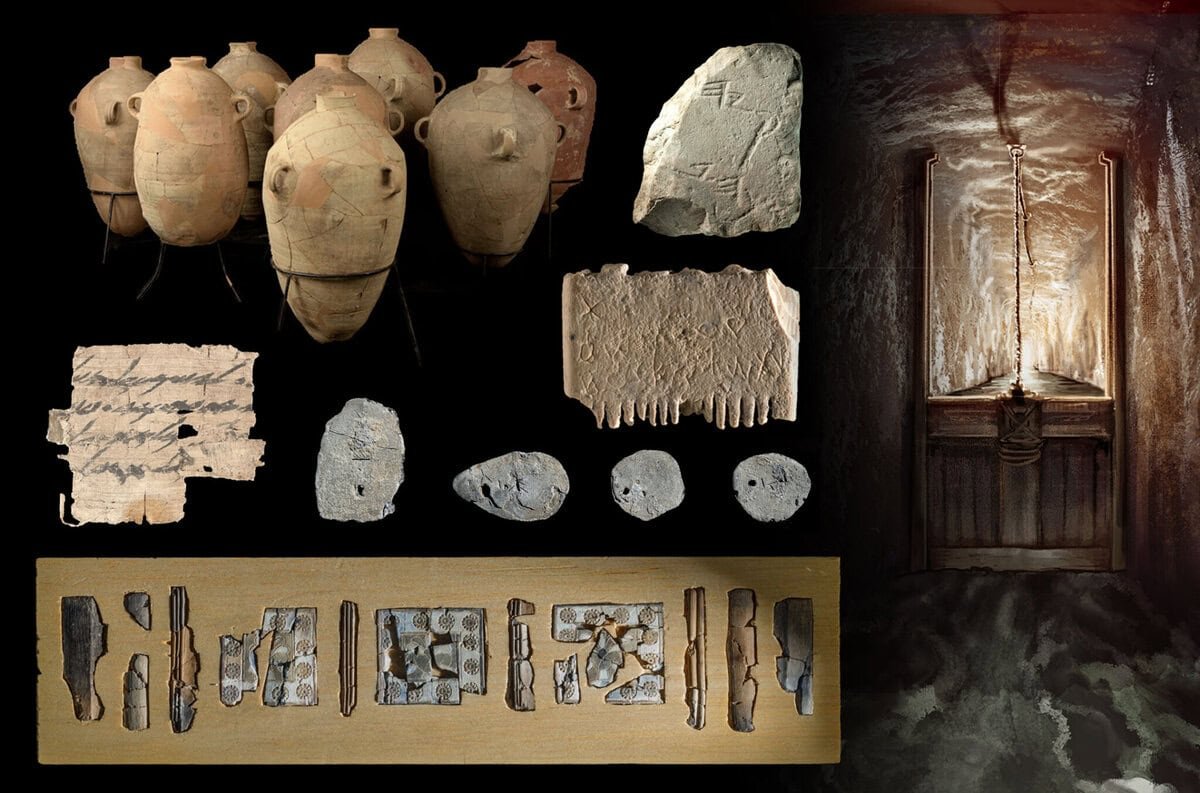Have You Ever Considered the Secrets Hidden Within Ancient Seals?
In a remarkable convergence of archaeology and biblical scholarship, a collection of ancient Hebrew seals has surfaced, unveiling names that breathe life into biblical narratives. Scholars and enthusiasts alike are captivated by these historical artifacts, which provide tangible links to the figures and stories of ancient texts. The discovery of these seals raises exciting questions about their origins, meanings, and implications, inviting deeper exploration into the world of biblical archaeology. With the passage of time, these small yet significant objects continue to articulate the resonance of history, culture, and faith, shaping our understanding of the past. Let us delve into how these artifacts emerge as a beacon of revelation.
Discovery Context
Understanding the journey of these seals is crucial to appreciating their significance in biblical archaeology. Excavated primarily in the regions historically inhabited by ancient Israel, these seals bear inscriptions from as early as the First Temple period, around the 8th to 6th centuries BCE. The geographic context of these finds, predominantly from sites within modern-day Israel, positions them within narratives familiar to biblical literature.
Biblical Reference
The names inscribed on these seals correspond to individuals and families mentioned in the Hebrew Bible. Such discoveries anchor the seals within a rich tapestry of biblical events, personalities, and genealogies referenced in sacred texts. This symbolizes a tangible connection between physical relics and literary traditions, reinforcing the historical dimensions of scriptural accounts.
Historical Background
These seals were typically crafted from clay or stone, serving dual purposes as personal identifiers and status symbols. The Hebrew inscriptions etched into them reveal socio-political and religious affiliations, offering a glimpse into the structured, complex society of ancient Israel. By tracing the existence and use of seals, scholars construct a vivid portrait of life in biblical times—complete with its hierarchies, exchanges, and legal conventions.
Geographic Location
Predominantly excavated in areas such as Jerusalem, Lachish, and Samaria, these seals reveal significant regional diversity. Their distribution reflects trade routes, cultural exchanges, and political boundaries of the ancient Near East. Amidst the mosaic of historical sites, each location contributes uniquely to our understanding of the geopolitical landscape that shaped the inhabitants’ lives and interactions.
Recent Findings
Recent excavations and discoveries have unveiled new seals, consistently adding depth to our knowledge of ancient Hebrew culture. Each artifact, documented with rigorous archaeological precision, assists scholars in tracing historical continuity and transformations over millennia. The accumulation of findings highlights not only the depth of ancient Israel’s genealogical roots but also the evolving methodologies enhancing modern archaeological inquiry.
Archaeological Evidence
The seals’ inscriptions serve as time capsules, encapsulating messages from the past that demand thoughtful analysis and interpretation.
Specific Artifacts
Among the collection, various seals are inscribed with prominent biblical names such as Hezekiah and Isaiah. These seem to correspond with notable figures and lineage from the Hebrew Bible, validating portions of the genealogical and narrative tradition. Such artifacts urge historians and theologians to examine these biblical connections, potentially confirming historical instances once shrouded in ambiguity or myth.
Dating Methods
Dating these artifacts involves sophisticated techniques combining typological analysis, stratigraphy, and molecular dating methods such as isotope analysis. Each technique enriches chronological frameworks, effectively situating the seals within precise historical contexts, which are essential for corroborating the timelines of corresponding biblical events.
Physical Descriptions
Typically, seals are small, often just a few centimeters in diameter, crafted from materials like agate, limestone, or clay. Intricate engravings, sometimes including personal emblems or animal motifs, characterize these artifacts. The delicate craftsmanship not only reveals artistic conventions of the time but also speaks to the technologies and tools available to ancient artisans.
Expert Interpretations
Experts interpret these seals as affirmations of historical narratives embedded within biblical accounts. Renowned archaeologists and biblical scholars provide insight into the socio-religious dynamics these seals suggest, often engaging in debates that balance tradition with empirical evidence. Such scholarly discourse enriches our understanding, perpetually challenging assumptions and expanding interpretive horizons.
Significance
The implications of these ancient seals transcend immediate historical contexts, resonating across theological, historiographical, and cultural domains.
Biblical Implications
The appearance of biblical names on these seals supports the historical credibility of certain biblical accounts, offering a palpable intersection between text and history. These artifacts substantiate specific genealogies, reinforcing their presence within the broader narrative while prompting nuanced discussions on biblical historiography and theology.
Historical Impact
Beyond their biblical references, these seals illuminate facets of ancient Near Eastern identities and worldviews. They offer clues to evolving administrative practices, literacy levels, and economic systems of their era. Moreover, they shed light on interpersonal and intersocietal relationships maneuvering through complex political terrains.
Modern Understanding
For contemporary readers and scholars, these seals bridge past and present, embodying the enduring relevance of biblical narratives. They inspire ongoing research, critical reinterpretation, and rekindled interest in bridging faith with the scientific methodologies of archaeology. Advances in interdisciplinary approaches, including digital imaging and computational analyses, continue to broaden the investigative canvas.
Research Status
Current endeavors in biblical archaeology continue the search for more artifacts, drawing connections among disparate finds, and affirming gaps within ancient chronicles. Collaborative efforts spanning historical research, technological application, and community engagement inform ongoing projects, catalyzing new questions, insights, and narratives.
Conclusion
In summary, the ancient Hebrew seal collection offers a significant window into the intertwined histories of artifacts and narratives. Through meticulous scrutiny and interpretation, they affirm the historical veracity of certain biblical elements while inviting ever-renewed investigations. As these compact relics continue to surface, they beckon scholars and enthusiasts alike to ponder their implications, championing the pursuit of knowledge and understanding. These findings signify the potential for future revelations, as each seal, discovered and interpreted, adds yet another thread to the intricate tapestry of time, faith, and humanity. We invite you to engage with this ongoing exploration of the past, fostering a dialogue that transcends individual discoveries to appreciate the intricate complexities of history as it unveils itself.






